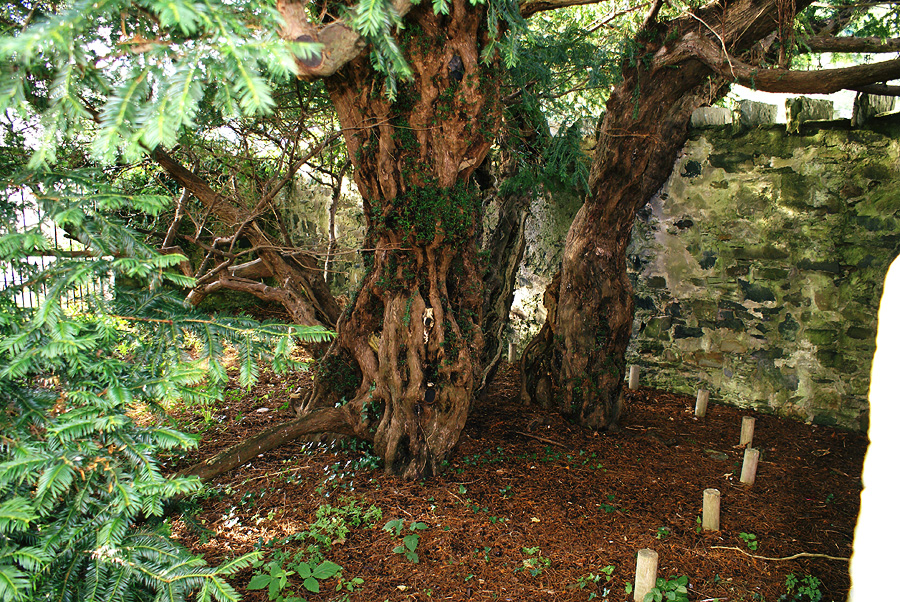In a shocking turn of events, the oldest tree in Europe–known as the “Fortingall Yew”–appears to be undergoing a sex change.
In female fashion, the otherwise male tree has begun to produce berries from one of its upper branches.
The berries produced by the tree, which is reputed to be 5,000-years-old, have been collected so that they may be protected and studied, the BBC reports.
A project which seeks to conserve the genetic diversity of yew trees, Taxus baccata in Latin, will be adding the seeds to their collection.
The berries were first noticed by a botanist with the Royal Botanic Garden in Edinburgh.
Scientists from the Royal Botanic Garden were quoted by BBC as having said that the discovery of berries came as “quite a surprise.”
Dr. Max Coleman with the Royal Botanic Garden told The Huffington Post in an e-mail that he “was very surprised to see a few berries on what was clearly otherwise a male tree.”
I was very surprised to see a few berries on what was clearly otherwise a male tree.
While some trees, such as ash, change sexes on a regular basis, Coleman insists that yew trees do so “very rarely.”
Some trees, like ash, can routinely change sex. Others, like yew, do this very rarely (…) We don’t fully understand why, but it probably has to do with maximizing the chances of reproduction and could be in response to environmental triggers, age or simply pure chance.
The Huff Post reports that trees can maintain two sexes at the same time for an extended period, which might be what we’re seeing with this 5,000-year-old yew.
Following the announcement of Coleman’s recent discovery, a lady named Janis Fry called the garden to tell them that she had observed a female branch on the tree back in 1996 and it might very well be the very same branch now sprouting berries. This, according to Coleman, “provides some tentative evidence” that the branch “has been female for at least 20 years.”
A lady called Janis Fry observed a female branch on the Fortingall Yew in 1996 (…) It seems to be the same branch and this provides some tentative evidence that this branch has been female for at least 20 years.
What do you think of the Fortingall Yew changing sexes and producing berries?
























